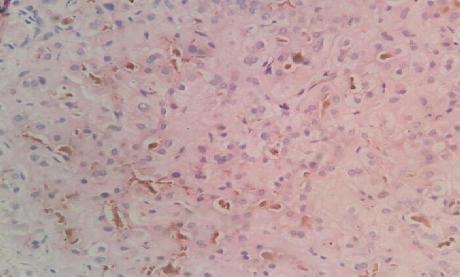
A Rare case of Cholestatic Liver Disease Progressive Familial Intrahepatic Cholestasis: Case Report
Abstract
Progressive familial intrahepatic cholestasis (PFIC) is a class of chronic cholestasis disorders that begin in infancy and usually progress to cirrhosis within the first decade of life. The average age at onset is 3 months, although some patients do not develop jaundice until later, even as late as adolescence. PFIC can progress rapidly and cause cirrhosis during infancy or may progress relatively slowly with minimal scarring well into adolescence. Few patients have survived into the third decade of life without treatment. Here we present a rare case of Progressive familial intrahepatic cholestasis masquerading as Wilson’s disease.
Full Text:
PDFReferences
Jansen PL, Müller MM. Progressive familial intrahepatic cholestasis types 1, 2, and 3. Gut 1998; 42:766.
Strautnieks SS, Kagalwalla AF, Tanner MS, et al.
Identification of a locus for progressive familial intrahepatic
cholestasis PFIC2 on chromosome 2q24. Am J Hum Genet
; 61:630.
Wang L, Soroka CJ, Boyer JL. The role of bile salt export
pump mutations in progressive familial intrahepatic
cholestasis type II. J Clin Invest 2002; 110:965.
Jansen PL, Müller MM. Progressive familial intrahepatic
cholestasis types 1, 2, and 3. Gut 1998; 42:766.
Gonzales E, Grosse B, Schuller B, et al. Targeted
pharmacotherapy in progressive familial intrahepatic
cholestasis type 2: Evidence for improvement of cholestasis
with 4-phenylbutyrate. Hepatology 2015; 62:558.
de Vree JM, Jacquemin E, Sturm E, et al. Mutations in
the MDR3 gene cause progressive familial intrahepatic
cholestasis. Proc Natl Acad Sci U S A 1998; 95:282.
Jacquemin E, Hermans D, Myara A, et al. Ursodeoxycholic
acid therapy in pediatric patients with progressive
familialintrahepatic cholestasis. Hepatology 1997; 25:519.
Davit-Spraul A, Gonzales E, Baussan C, Jacquemin E.
Progressive familial intrahepatic cholestasis. Orphanet J Rare
Dis 2009; 4:1.
Arnell H, Bergdahl S, Papadogiannakis N, et al.
Preoperative observations and short-term outcome after
partial external biliary diversion in 13 patients with progressive
familial intrahepatic cholestasis. J Pediatr Surg 2008;
:1312.
van der Woerd WL, Kokke FT, van der Zee DC, Houwen
RH. Total biliary diversion as a treatment option for patients
with progressive familial intrahepatic cholestasis and Alagille
syndrome. J Pediatr Surg 2015; 50:1846.
Kurbegov AC, Setchell KD, Haas JE, et al. Biliary
diversion for progressive familial intrahepatic cholestasis:
improved liver morphology and bile acid profile.
Gastroenterology 2003; 125:1227.
Englert C, Grabhorn E, Richter A, et al. Liver
transplantation in children with progressive familial
intrahepatic cholestasis. Transplantation 2007; 84:1361.
Lykavieris P, van Mil S, Cresteil D, et al. Progressive
familial intrahepatic cholestasis type 1 and extrahepatic
features: no catch-up of stature growth, exacerbation of
diarrhea, and appearance of liver steatosis after liver
transplantation. J Hepatol 2003; 39:447.
de Vree JM, Ottenhoff R, Smith AJ, et al. Long term
effects of hepatocyte transplantation in an animal model of
progressive familial intrahepatic cholestasis (abstract).
Hepatology 1999; 30(4 pt.2):409A.
De Vree JM, Ottenhoff R, Bosma PJ, et al. Correction
of liver disease by hepatocyte transplantation in a mouse
model of progressive familial intrahepatic cholestasis.
Gastroenterology 2000; 119:1720.
Refbacks
- There are currently no refbacks.

This work is licensed under a Creative Commons Attribution-NoDerivatives 4.0 International License.
An initiative of The Tamil Nadu Dr M.G.R. Medical University